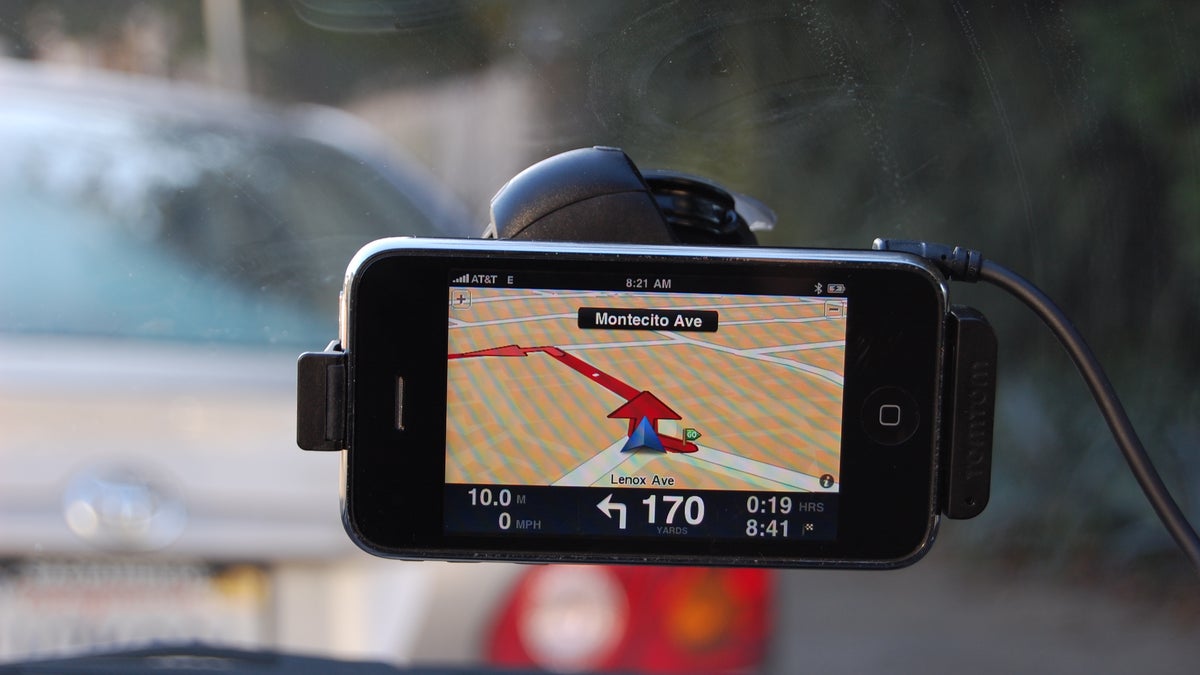Mounting your GPS device
Any automotive GPS device worth its salt will come packaged with some sort of suction cup mount that will allow users to stick their unit to their vehicle's windshield. But is this the best way to keep your navigation device in place while you drive?

Any automotive GPS worth its salt will come packaged with some sort of suction cup mount that will let users stick it to a vehicle's windshield. For most users, this is where road ends where GPS device mounting is concerned. But is this the best way to keep your navigation device in place while you drive? And what about that weird plastic disk that was also in the box? Let's take a look at the pros and cons of the different GPS mounting options.
Pay attention, because what you learn here can also be applied to mounting your GPS-enabled smartphone.
Windshield suction mount
The suction cup mount is typically the mount of choice for GPS units, because it comes packaged with the device. For most vehicles, the windshield suction mount places the GPS device within the driver's peripheral vision, keeps the speaker close to the driver's head for better hearing of spoken directions, and also places the touch screen within an arm's reach.
However, care must be taken to ensure that your device's mounting location is within the legal zones to avoid an obstructed vision ticket. These zones vary from municipality to municipality. Some states will allow the entire base of the windshield, while others will only allow the outside corners. Check your local laws before mounting.
Neat freak users who like to keep an ultra clean car will also find issue with the faint circles and finger smudges that the constant placing and removal of a suction cup from the windshield.
Dashboard adhesive disk
Most car GPS devices will also ship with a mysterious black disk with an adhesive backing. Don't throw it away. This is a dashboard-mounting disk that will let you attach your GPS device to the dashboard using the suction mount.
One advantage to using a dashboard mount is that the GPS sits even closer to the user for even easier reaching, viewing, and hearing, particularly on vehicles with steeply raked or very upright windshields like the Honda Fit or Scion xB. Dashboard mounts also usually skirt obscure windshield mounting laws.
However, the single use nature of the disk means that you've only got one shot to find the perfect mounting location. When you do decide to remove the disk (for example, to sell the car) there is the potential to leave a sticky or papery residue or, on older cars, damage the dashboard's finish.
Friction mount
Friction mounts are large fabric or rubber-backed bags with a smooth plastic mounting surface for attaching your GPS device's suction cup mount. Friction mounts are usually filled with beanbag stuffing or a gel to add weight to press down on the rubber backing, keeping the mount in place as you stop, go, and turn.
Friction mounts carry all of the pros of an adhesive dashboard mount--close proximity to the driver, avoidance of most local GPS mounting laws--without the permanence of an adhesive. However, because they're only held on by friction, friction mounts are more likely to come loose and fall if improperly mounted, overloaded, or in a catastrophic accident.
Other mounting options
Other types of mounts exist, including air vent mounts, sun visor mounts, and cup holder mounts. Each of these alternative mounting options carries their own pros and cons. Make sure that your GPS device has a clear view of the sky when using any of these options for the best navigation accuracy.
What works for you?
What type of mount do you use for your GPS device? We'd like to let us know.

